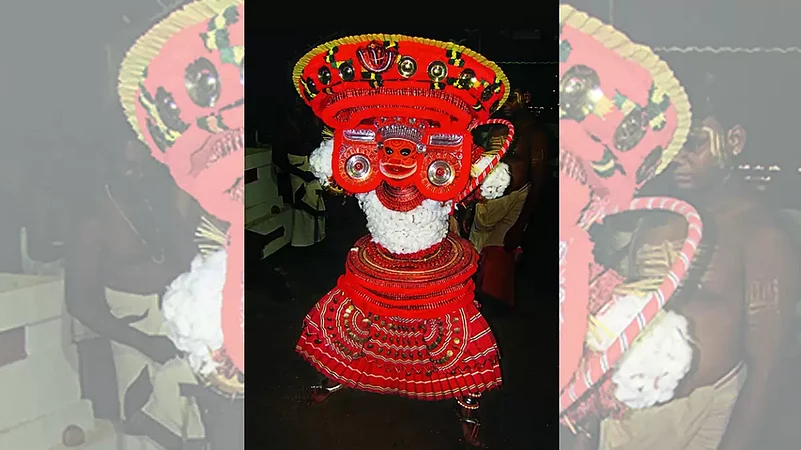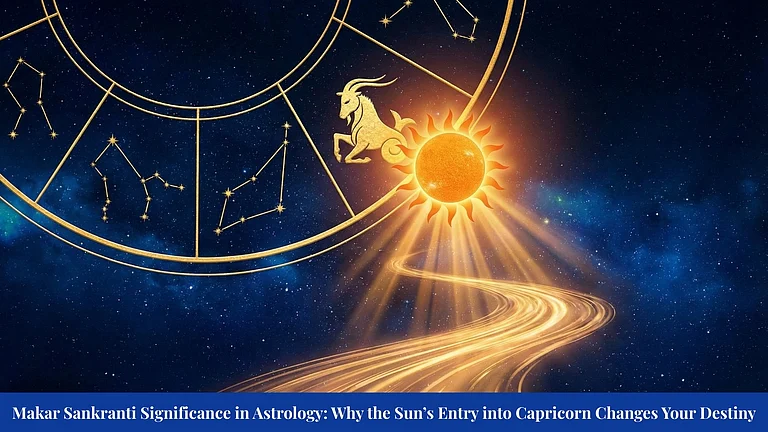In Kerala, in the 1880s, inequality, oppression and upper caste rule was predominant. It was Shivratri. Shiva was the God of the upper castes. They worshiped Lord Shiva in different ways as Dakshinamurthy, Mrityunjayan, Kirathamurthy, Aghoram and so on. All these forms had temples built by Brahmins based on the then prevailing spiritual rules and guidelines. The lower castes were not allowed to enter or worship in temples, so temple visit and worship were reserved only for upper castes.
Sree Narayana Guru, a social reformer who stood for the downtrodden of Aruvipuram, a village on the banks of Neyyar at the southern tip of Kerala, performed a rare consecration with a number of people from among the oppressed as witnesses. There were complex rules, and consecration required a divine stone brought to life with special rituals. In such an environment, Sree Narayana Guru, born in a poor, marginalised community, took a dip in the river, picked up a casual stone and consecrated it as Shiva in the presence of thousands of people. When Brahmins, furious at this act, ran towards him, the Guru made a statement. “I have consecrated not your Brahmin Shiva, but the Shiva of the poor, the class I represent,” he said.
In ancient society, the power structure was always determined by three factors. Artha (money), vijnaan (knowledge) and agni (ritual fire). Artha was the accumulation of private property, vijnaan denoted the production of knowledge and agni, was the right to perform sacrifices around ritual fires. If religion was a private affair, priesthood was related to power. It is this power structure that divided man into two categories, superiors and inferiors. The consecration of Shiva at Aruvipuram was an event that lent the priestly structure some genuine essence of spirituality.
This is how Lord Shiva became a political, revolutionary symbol in the history of Kerala’s renaissance. After many successive struggles that followed, the Temple Entry Proclamation was passed in 1936. Lower castes gained the freedom to enter temples and worship.
Shiva is an active presence in anthropology, ranging from folk to social history. A God wearing ashes, lying on a cremation ground, drinking alcohol and wearing a deadly snake around his neck certainly stands close to folk tradition and mythology and its validation.

“Each moment, my affinity is towards Lord Siva, whose head is glorified by the moving waves of the celestial Ganga, which flows around his tangled hair, who has the fire burning with noise on the surface of his forehead and who has the crescent moon as a crown on his head,” Ravana sings these famous lines of Jata Kataha Sambhrama in the panchachamara metre in obeisance to Shiva, who is tuning his Ravana hastha veena and dancing. This is a powerful folk image of Ravana the anti-hero of the Ramayana and the hymn concludes, “Oh Lord Siva, those who recite this hymn written by Ravana in the dusk of pradosha will be blessed with all the wealth in abundance.”
ALSO READ: Shiva In Mythology: Let’s Reimagine The Lord
Theyyam is a ritual art form of north Kerala, with a specific performance called Pottan Theyyam (Performance of a Fool). In the mythology of Pottan Theyyam, Shankaracharya shouts away a Dalit who was coming along his way. The pottan asks him,“Why should I move? We have similar bodies, the colour of your blood and mine is the same. And according to your philosophy, there is no impurity of the soul. Then who should move away, my body or my soul?” The myth says that it was Shiva who came in the disguise of a Dalit to confront Shankaracharya and teach him about the evils of caste.
In another myth of Wayanatukulan, Shiva disguises himself as a hunter and goes to the forest. Toddy was oozing from a coconut tree. He drank a lot, became intoxicated and wild. Parvati got scared and, with her divine power, swept the toddy away to the top. The next day, when Shiva came to drink the toddy again, he saw that the toddy was on the top of the palm tree. He got angry and created a son named Divyan by hitting his thigh and assigned him the task of extracting honey from the coconuts on the very top. Later, this became the job of a specific community. When the people of this community face insult about their caste, they proudly say, “We are of Shiva’s lineage and this job is assigned by Shiva himself.” Wayanatukulavan is still a famous theyyam in north Kerala.

In Koodiyyattam, the ancient Sanskrit theatre tradition, while playing the Abhisheka nataka by Bhasa, the 1st-century poet, there is a sequence in which Ravan lands his mythical aircraft when Mount Kailasa hinders its flight, plucks Kailasa and juggles them. At the time, a quarrel was going on in Kailasa. Parvati detected a woman in Shiva’s hair (Ganga) and was about to leave him in anger with their children. It was at this time that Ravan was juggling the Kailasa. She felt a heavy tremor, grew scared and embraced Shiva.
Mattavilasa Prahasana (A Farce of Drunken Sport) is a short one-act Sanskrit play written by Pallava King, Mahendravarman, in the beginning of the 7th century in Tamil Nadu. Strongly influenced by the Shaivite elements, it is adopted in the most ancient and surviving Sanskrit theatre tradition of Koodiyaattam. Mattavilasa Prahasana is a satire that pokes fun at the peculiar aspects of the heretic Kapalika and Pasupata Saivite sects, Buddhism and Jainism. The play revolves around the drunken antics of a Kapalika mendicant (blessed by Shiva and wandering like Shiva personified), called Satyasoma, his wife, Devasoma and the loss and recovery of their skull-bowl.
Natarajan, the dancing Shiva, is a very popular concept in Indian aesthetics and its studies range from art to modern science. In folk tales, it is a dance performed by Lord Shiva at Mount Kailash. For the modern physicists, Shiva’s dance is the dance of ‘subatomic matter’. The figure of Nataraja is enclosed in a ring of fire which represents the continuous creation and destruction of the universe. Mass and time are enclosed within this cosmic ring of fire. As Fritjof Capra mentions in his book, The Tao of Physics, Nataraja’s dance embodies cycles of life like creation and destruction, birth and death and the same thing happens at the quantum level.
Shiva is the main character in Kalidasa’s play Kumarasambhavam. Kalidasa was a Saivite. He admires Shiva in the opening sequences of the text of the play.

Pluralism is the social dimension of Shaivite philosophy. Pratyabhijna darshana (recognition), which is the vision of Kashmiri Shaivites, put forward a philosophy of recognition, of recognising the self. But the philosophy resonates with the Nayanars and Azhwars in Tamil Nadu, who dance in streets singing in ecstasy songs in praise of Shiva. Thoughts mixed with knowledge, devotion and social criticism, known as Vachankavitas, are famous in south Indian states like Karnataka and Andhra Pradesh. A.K. Ramanujan, Manu V. Devadevan, Sachidanandan K. have compiled the works of saint poets. The dualism of Visishtadvaita is a Vaishnava philosophy with two aspects in various versions like Dwaita, Vishishtadvaitha, Advaita and so on. Though Dwaita and Vishishtaadvaitha are Vaishnava visions, Appayya Dikshitar put forward a Shaiva version of Visishtadvaita. Shankaracharya’s Advaita is strongly influenced by the Saivite philosophy.
While the idea of Shiva as Chandramauli, Dakshinamurti, Umaapathi and so on remains close to the upper caste tradition, the Aghoris stand as a distinct group, keeping away from the upper caste. They flout the conventional Brahminical concepts of worship by drinking soma rasa (alcohol), sleeping in graveyards and eating roasted flesh.
Shiva is a God active in the cultural politics of black magic. Many chants and methods of worship of Shiva such as Aghoram and Bhairavan, for instance, are used in many tantric rituals of removing evil spirits from human body.
Many customs like human sacrifice was also used. There is a reason why a fervent witchcraft culture did not spread in Kerala. When the priesthood of Kerala formed a unified scheme, the rights of chanting and invocation in Vedic culture were assigned to six Brahmin families, such as Kallur, Kavanad and Kannamangalam. Apart from this, alternative schemes were also devised for practices like animal sacrifices. Instead of animal sacrifice, rice delicacies similar to meat were used, and instead of blood, lime and turmeric were used in a mixture. Alternative systems were implemented that eschewed violence and followed social dharma.
Shiva has a great place in witchcraft treatment. In protest at the humiliation of her husband Shiva by her father Daksha, Sati sacrifices her body by jumping into the fire. An enraged Shiva heaps his wrath on the Universe, jumps up and slams his head on the ground. This form of Shiva is called Aghora. The Aghora mantra is chanted to cure epileptics.
Shiva is a primordial God germane to every pulse of India, and his presence extends from folk to modern physics. It amuses like Nataraja, the dancing Shiva, but also validates culture through myth and folklore with his primal and disturbing desires.
(This appeared in the print edition as "Shiva in God’s Own Country")
(Views expressed are personal)
Keli Ramachandran The writer is a mumbai-based Art organiser and documentary film maker.






















